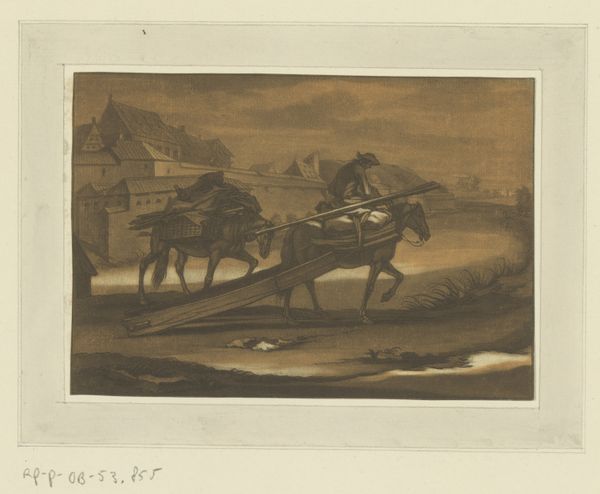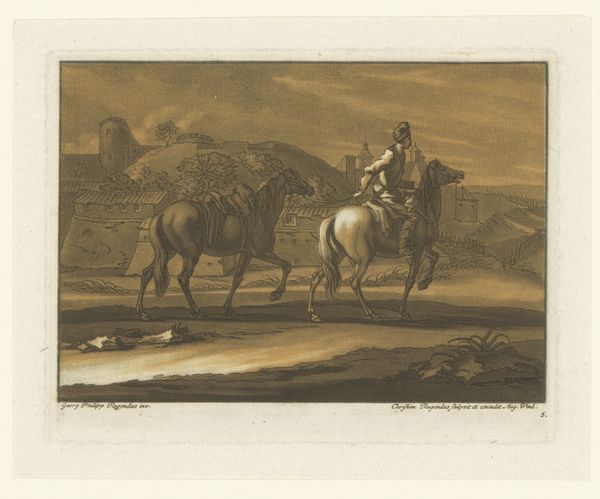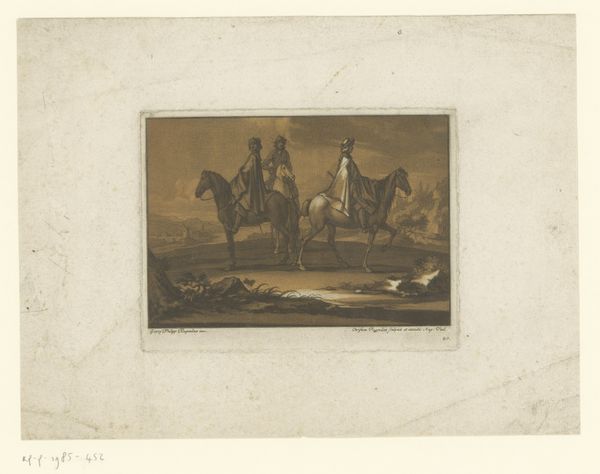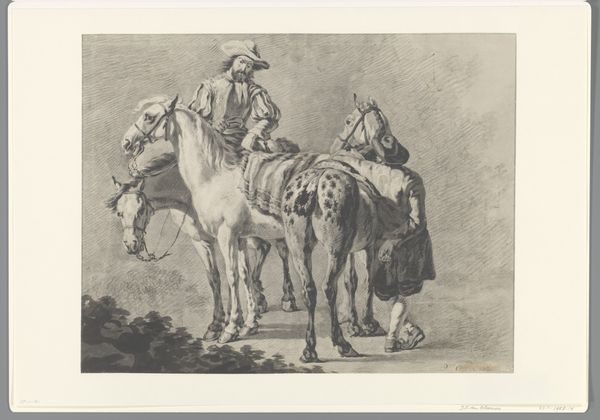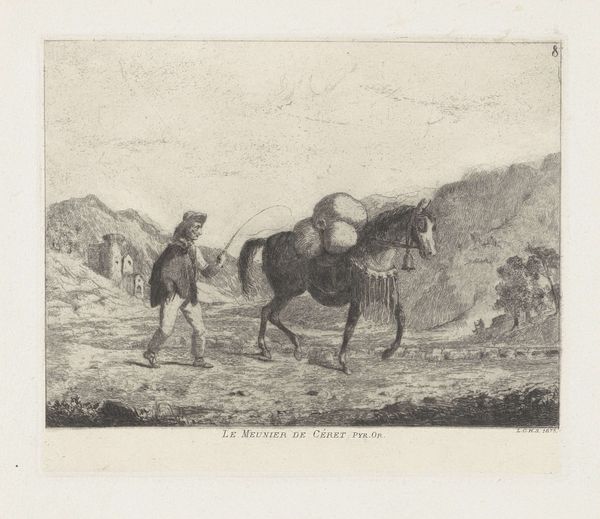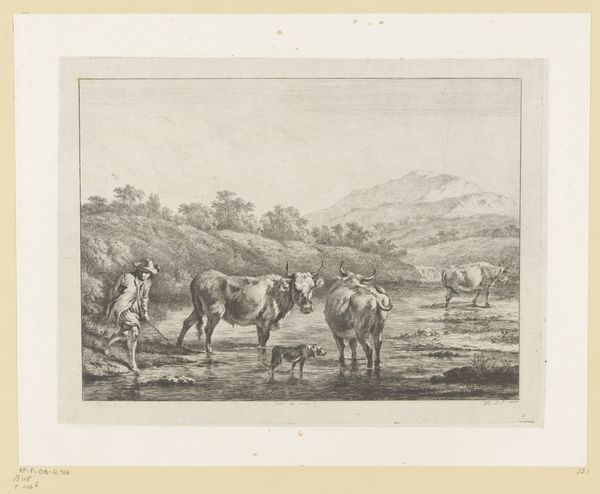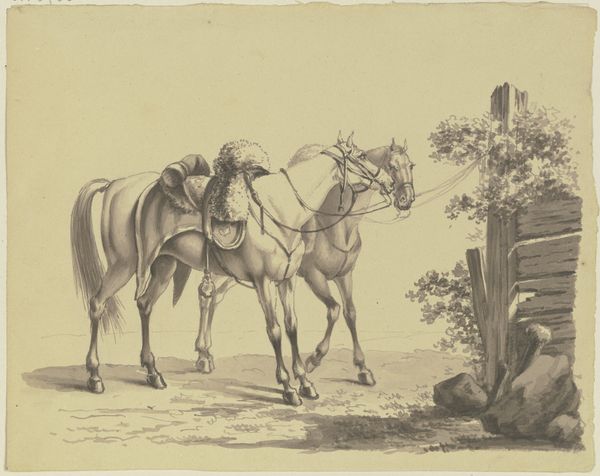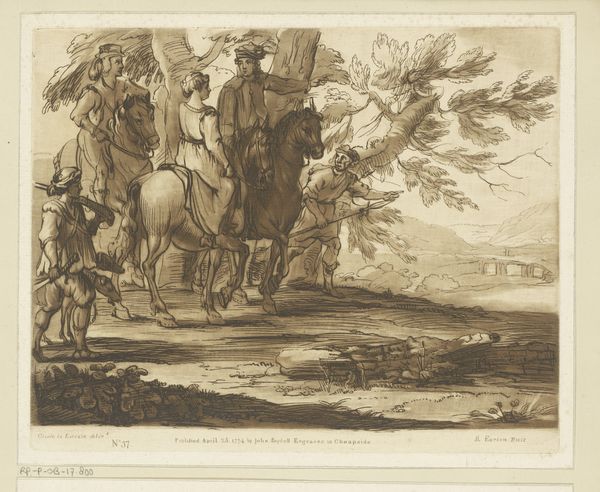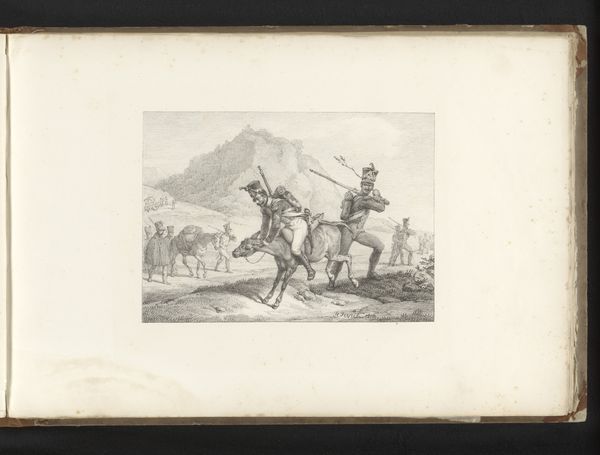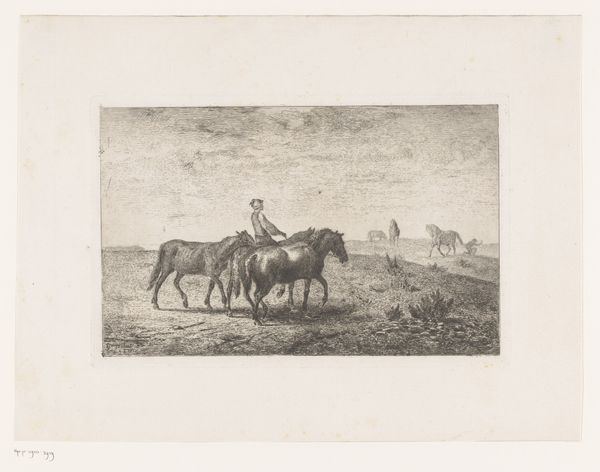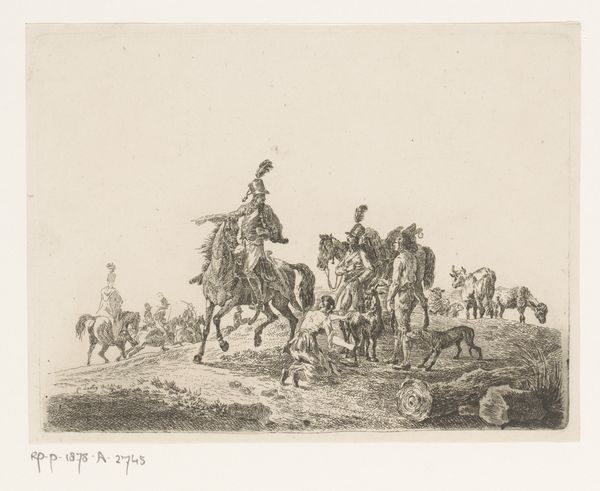
drawing, paper, ink
#
drawing
#
baroque
#
landscape
#
paper
#
ink
#
cityscape
#
genre-painting
#
realism
Dimensions: height 124 mm, width 174 mm
Copyright: Rijks Museum: Open Domain
Curator: Christian Rugendas created this ink drawing on paper, sometime between 1718 and 1781. It's called "Two Packed Horses Outside a City Wall, with a Child Seated on One." Editor: Immediately, I’m struck by the contrasting stillness and potential for movement. The horses are posed, yet they seem poised for action just outside what appears to be the city walls. It has a quiet intensity to it. Curator: Indeed. The composition guides our eye from the figures to the architecture and distant landscape, creating a dialogue between the man-made and natural world that speaks to urbanization of the 18th century and our control over nature. Rugendas seems fascinated by both genre painting and landscape art; and this piece beautifully straddles these two traditions of the Baroque. Editor: From a purely formal perspective, the restricted color palette adds to the drama, emphasizing tonal variations, and the interplay of light and shadow contributes significantly to the solemnity. This carefully controlled chiaroscuro not only creates depth, but also imbues the scene with a strong emotional charge, focusing the observer's eye towards the figures of interest: the child and the heavily packed horses. Curator: I’d argue Rugendas employs those formal techniques to say something specific about 18th-century social structures. The heavy packing suggests trade or travel, activities inseparable from the social and political climates of that time. The child suggests a human element amidst the commercial activity. We see that transition towards modern economies with the commercial trade and travel and all that labor rests literally upon the beasts of burden, a metaphor for that labor within burgeoning economies. Editor: It’s true that the child seated atop this precarious cargo certainly gives one pause, it draws attention to vulnerability amid perhaps impersonal or even cruel mercantilism. Yet Rugendas shows that fragility against the stable lines of those angular crates atop the horses and again against the imposing wall that protects those activities. Even small lives find stability and progress inside of emerging city economies. Curator: Looking closer, the cityscape in the backdrop seems equally significant. It grounds these activities and the human figures within an economic reality. What seems like a casual scene is instead a microcosm of 18th-century life. Editor: By analyzing how Rugendas contrasts figures with angular forms and open vistas in subdued tones, we can appreciate how he balances emotion and geometry to convey depth. Curator: Absolutely, and studying his use of symbolism illuminates broader historical and social dynamics, offering us a layered understanding of that transformative era. Editor: Agreed. What at first appeared to be just a quiet moment ends up inviting contemplation about our roles within greater, perhaps unavoidable structures.
Comments
No comments
Be the first to comment and join the conversation on the ultimate creative platform.
